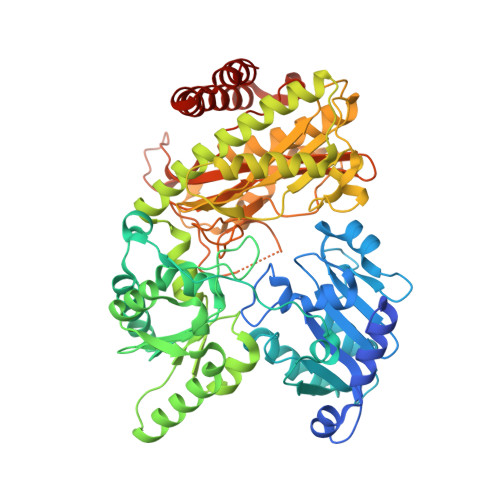Crystal structure of X-prolyl aminopeptidase from Caenorhabditis elegans: A cytosolic enzyme with a di-nuclear active site.
Iyer, S., La-Borde, P.J., Payne, K.A., Parsons, M.R., Turner, A.J., Isaac, R.E., Acharya, K.R.(2015) FEBS Open Bio 5: 292-302
- PubMed: 25905034
- DOI: https://doi.org/10.1016/j.fob.2015.03.013
- Primary Citation of Related Structures:
4S2R, 4S2T - PubMed Abstract:
Eukaryotic aminopeptidase P1 (APP1), also known as X-prolyl aminopeptidase (XPNPEP1) in human tissues, is a cytosolic exopeptidase that preferentially removes amino acids from the N-terminus of peptides possessing a penultimate N-terminal proline residue. The enzyme has an important role in the catabolism of proline containing peptides since peptide bonds adjacent to the imino acid proline are resistant to cleavage by most peptidases. We show that recombinant and catalytically active Caenorhabditis elegans APP-1 is a dimer that uses dinuclear zinc at the active site and, for the first time, we provide structural information for a eukaryotic APP-1 in complex with the inhibitor, apstatin. Our analysis reveals that C. elegans APP-1 shares similar mode of substrate binding and a common catalytic mechanism with other known X-prolyl aminopeptidases.
Organizational Affiliation:
Department of Biology and Biochemistry, University of Bath, Claverton Down, Bath BA2 7AY, UK.















